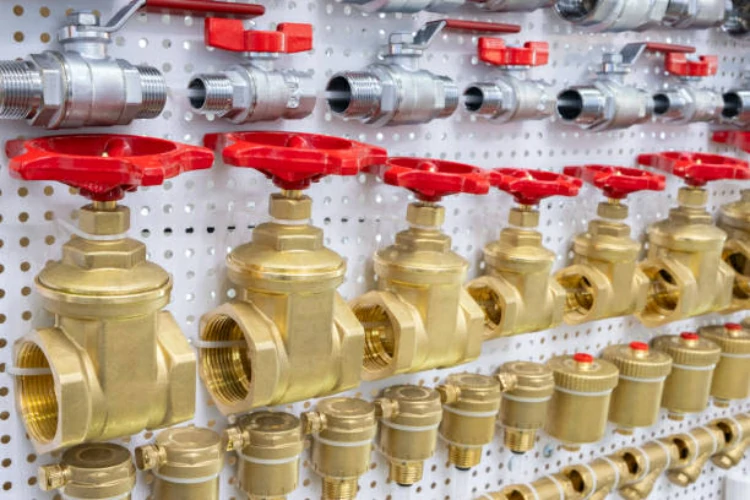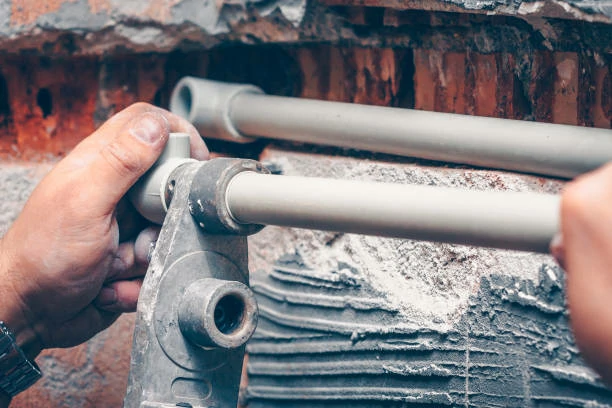Introduction:
In industrial production, ball valves are crucial fluid control devices, where the choice of structure and material significantly impacts production efficiency. This article delves into floating ball valve, fixed ball valves, and resilient ball valves, introducing their design principles and characteristics. Material classification for ball valves includes low carbon steel, brass, forged carbon steel, iron, and stainless steel, each with its advantages. Using the IFANPLUS brand’s brass ball valve as an example, we showcase its outstanding performance in industrial applications, providing a reliable fluid control solution for enterprises. The selection of ball valves directly influences production efficiency and equipment safety.
Classification of Ball Valves by Structure:
Floating Ball Valve:
Design involves the floating movement of the ball between two valve seats.
The ball is clamped between two seats under the action of medium pressure, enhancing sealing on the outlet side for improved performance.
Suited for medium to low pressure, medium to small diameter valves.
Fixed Ball Valve:
The ball in a fixed ball valve remains stationary, not moving under pressure.
Equipped with a floating valve seat that moves under medium pressure, ensuring reliable sealing.
Suitable for high-pressure and large-diameter valves, with a more complex structure but smaller torque for operation.
Rise of oil-sealed ball valves reduces torque and enhances sealing reliability, especially for high-pressure and large-diameter ball valves.
Resilient Ball Valve:
The ball in a resilient ball valve is elastic, and both the ball and the sealing ring are made of metal for excellent sealing performance.
Relies on external force application as the pressure of the medium alone cannot meet the sealing requirements.
Suitable for high-temperature and high-pressure conditions, with an elastic groove on the lower end of the ball for controlled sealing.
Classification of Ball Valves by Material:
Low Carbon Steel Ball Valve:
Manufactured using low carbon steel, suitable for general industrial applications.
Offers good strength and weldability, applicable to low-pressure and moderate-temperature conditions.
Brass Ball Valve:
Mainly composed of brass, suitable for specific applications.
Brass provides excellent thermal conductivity and corrosion resistance, commonly used in water and gas pipeline systems.
Forged Carbon Steel Ball Valve:
Made using the forging process, used in high-pressure and high-temperature industrial environments.
Forging imparts high strength and wear resistance, suitable for demanding conditions.
Iron Ball Valve:
Primarily made of iron, including gray iron and ductile iron.
Suitable for applications with high demands on strength and corrosion resistance, common in industrial and construction sectors.
Stainless Steel Ball Valve:
Manufactured using stainless steel materials such as 304, 316, etc.
Used in corrosive conditions, providing excellent corrosion resistance, common in chemical and food industries.
PPR Ball Valve:
Made using polypropylene (PPR) material, suitable for chemical and water treatment applications.
PPR material offers good chemical stability and corrosion resistance, ideal for specific medium transport systems.
Structure of Ball Valves:
Main Body or Casing:
Houses all other components, providing the primary framework.
Acts as the first resistance barrier, connects to pipelines, and protects other components.
Cover:
Covers the opening of the valve body, typically secured with bolts or screws.
Reinforces the strength of the valve body, forming the second pressure boundary.
Trim:
Includes the ball (valve disc), valve seat, stem, and valve sleeve.
The hollow ball, in conjunction with the valve seat, forms the pressure-resistant boundary.
Actuator:
Responsible for opening and closing the valve, includes handwheels, levers, motors, screw stems, pneumatic actuators, and hydraulic arms.
In most ball valves, the actuator is mounted on the yoke attached to the valve cover.
Packing:
Located in the space between the stem and the valve cover, usually made of fibrous materials like flax or PTFE.
Prevents stem leakage, protects internal components, and prevents any potential leaks.
Product Case: Superior Performance of Brass Ball Valves in Industrial Applications
Customer Profile: A leading industrial manufacturing company focusing on chemical products and liquid handling equipment. Due to expanding operations, the client urgently required a stable and reliable fluid control solution to enhance production efficiency and ensure equipment safety.
Challenge: Frequent control of liquid flow was essential in the industrial production process to ensure smooth production at various stages. Dealing with corrosive liquids and high-pressure environments posed challenges with traditional valves, leading to frequent maintenance, leakage risks, and operational complexity. The client sought a high-performance fluid control solution to improve process efficiency, reduce maintenance costs, and ensure product quality.
Solution: After in-depth communication to understand client needs, a solution using brass ball valve, including the IFANPLUS brand’s ball valves, was recommended.
Solution Highlights:
- Corrosion Resistance: IFANPLUS brass ball valves, with strong corrosion resistance, effectively withstand the erosive nature of industrial liquids, extending their lifespan.
- Stable Sealing Performance: The advanced sealing technology in IFANPLUS brass ball valves ensures complete sealing in the closed state, preventing leakage.
- User-Friendly: IFANPLUS brass ball valves feature a simple operation, enabling easy switch control without complex training for operators.
- Reliability in High-Pressure Environments: IFANPLUS brass ball valves operate reliably in high-pressure conditions, ensuring stable fluid control at various production stages.
Implementation and Results: Replacing traditional valves with IFANPLUS brass ball valves resulted in significant benefits for the client. The streamlined workflow, simplified operation, reduced maintenance frequency, and improved production line stability showcased the valve’s reliability. The reduction in leakage risks ensured a safe production environment. This successful case provides a viable, high-performance fluid control solution for similar industrial enterprises, emphasizing the outstanding performance of the IFANPLUS brand in fluid control.
Conclusion:
In conclusion, the critical nature of ball valves in industrial production is evident not only in their structure (floating ball valves, fixed ball valves, resilient ball valves) and design principles but also in the diversity of material choices (low carbon steel, brass, forged carbon steel, iron, stainless steel, PPR). These features enable ball valves to meet the requirements of different conditions, playing a crucial role in enhancing production efficiency and equipment safety. Therefore, the correct selection of ball valve types and materials suitable for specific conditions is essential for improving production benefits.
Contact:
IFANPLUS is a professional manufacturer of plastic pipes, fittings, and various types of valves in China. If you are interested in our PPR valves, pipes, and fittings, feel free to contact our experts. Explore our diverse range of drainage and pipeline valve products, including German and American standard PPR and PVC pipes and various valves. We offer various standard pipes to meet your specific requirements. Click here to delve into our products.
We will reply your email or fax within 24 hours.
You can call us at any time if there is any question on our production.
For more information,pls visit our webside https://www.ifanplus.com/
Pls Mailto: [email protected]






